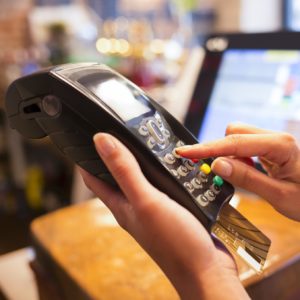EMV Frustrations? What You Need to Know

Even though the EMV liability shift is nearly ten months underway, many merchants are frustrated. Their customers experience lengthy transaction times and confusion about the process, while merchants themselves are seeing an uptick in chargebacks.
Rob Kroeger, i3 Commerce Technology’ director of integration, talks about the mounting EMV frustrations.
Frustration #1: Lengthy Transaction Times
Now that consumers need to complete multiple steps to authorize purchases with chip cards – insert card, answer a few questions and sign – transactions take longer to complete. This time adds up and translates into longer wait times for consumers.
On the Plus Side: “Visa and MasterCard are introducing their quick chips, which will roll out in the future and speed that process up,” Rob says. “We’re uncertain about the exact implementation, but it will drastically reduce wait times for a transaction to complete. The process of dipping, or inserting, the card will take less than two seconds with the new chips.”
Frustration #2: Chargebacks – the Merchant Almost Always Loses
Before the EMV liability shift, credit card issuers primarily absorbed chargeback costs. However, the EMV liability shift protects whoever offers the greater level of security. “Now, when it comes to EMV fraud-related activity, the merchant is automatically losing the chargeback without even being questioned – regardless of whether they followed all of the correct procedures that were previously applicable. The importance of having EMV-capable equipment is imperative,” Rob explains.
On the Plus Side: If you do have EMV-capable equipment, you have a better chance of winning that chargeback related to fraud. Without EMV equipment in place, you have almost no recourse, as you are the liable party with the least secure system. “With the proper equipment in place, your chances of retaining those funds from a fraudulent transaction go up considerably,” Rob says.
Frustration #3: PINs and Confused Customers
With the EMV liability shift, many customers are struggling to understand why sometimes they have to enter a PIN number when they use their credit card, which is new.
“Just the fact that there may be a PIN number needed to run a credit transaction now is confusing. Previously, the only time you ever needed a pin number was with a debit transaction – which is not true anymore – and that is confusing for people,” Rob explains.
On the Plus Side: Chip and PIN authorizations are considered the strongest form of security, followed by chip and signature. Alleviate any concerns or frustrations your customers may have by reminding them of that. It’s best for a customer to contact their bank to setup or reset their PIN associated to their EMV chip card. As a merchant, it’s important not to bypass an EMV transaction by key entering the card information.
Subscribe to Card Talk
Our monthly newsletter delivers the latest payments news straight to your inbox


